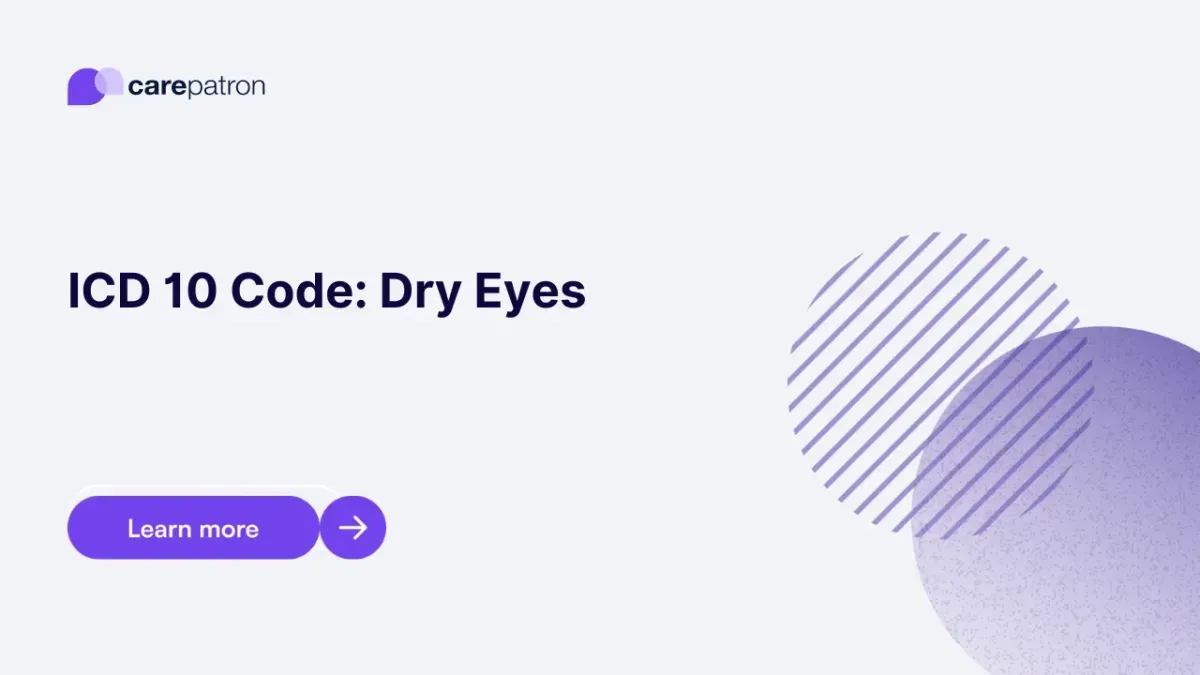
Dry Eyes ICD-10-CM Codes
Learn about the ICD-10-CM codes for dry eyes that you can use through this guide.
Use Code
Commonly asked questions
While dry eyes cannot always be cured, they can often be managed effectively with treatments such as artificial tears, lifestyle changes, and medications. The goal is to relieve symptoms and improve eye comfort.
Common risk factors for dry eyes include aging, hormonal changes (particularly in women), environmental factors (such as low humidity and exposure to wind or smoke), certain medical conditions (like autoimmune diseases), and the use of certain medications.
Yes, untreated dry eyes can lead to complications such as corneal damage, increased risk of eye infections, and impaired vision. It's essential to seek treatment and manage dry eye symptoms to prevent these complications.
EHR and practice management software
Get started for free
*No credit card required
Free
$0/usd
Unlimited clients
Telehealth
1GB of storage
Client portal text
Automated billing and online payments
